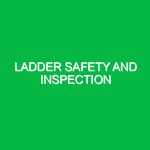Introduction to Scaffold Safety Essentials
Scaffolding is a fundamental component in construction, providing vital support for workers and materials. However, scaffold safety essentials play a crucial role in ensuring a secure working environment. The significance of scaffold safety cannot be overstated; it is a matter of life and death. In the United States alone, the Occupational Safety and Health Administration (OSHA) reports that falls from heights are among the leading causes of workplace fatalities. Thus, understanding and implementing scaffold safety essentials is not just a best practice; it is a legal requirement.
Scaffold safety essentials involve a range of practices, regulations, and preventative measures that protect workers engaging in elevated tasks. These essentials encompass proper design, maintenance, training, and adherence to regulatory standards. By prioritizing these elements, companies can mitigate risks and create a safer working environment for their employees.
Identifying Potential Hazards and Risks
Understanding the hazards associated with scaffolding is the first step toward effective safety management. Various factors contribute to scaffold-related accidents, and awareness can significantly reduce risks. Here are some common hazards associated with scaffolding:
1. Falls from Heights
Falls are the primary concern when working on scaffolds. Workers can fall from the scaffold itself or while accessing it. For instance, in a case documented by OSHA, a construction worker fell approximately 30 feet from an improperly secured scaffold, resulting in severe injuries. This incident highlights the necessity of ensuring that all scaffolds are correctly erected and maintained.
2. Scaffold Collapse
A scaffold can collapse due to several factors, including overloading, improper assembly, or lack of maintenance. In one notable incident in 2017, a scaffold collapse at a building site injured multiple workers. Investigations revealed that inadequate inspection protocols contributed to the disaster. This scenario underscores the importance of regular inspections and adherence to load capacities.
3. Falling Objects
Tools, materials, or debris can fall from scaffolds and strike individuals below. According to the National Institute for Occupational Safety and Health (NIOSH), falling objects account for a significant percentage of scaffolding injuries. Workers should always wear hard hats and establish exclusion zones to minimize the risk of injury from falling objects.
4. Electrocution
Scaffolds can come into contact with overhead power lines, posing a severe electrocution hazard. In one heartbreaking case, a worker was electrocuted while attempting to work near uninsulated power lines. Proper training and awareness of electrical hazards are essential to prevent such fatalities.
5. Inadequate Training
Lack of training is a significant contributor to scaffold-related accidents. Workers must understand how to properly use and maintain scaffolds. A study by the Center for Construction Research and Training found that more than half of scaffold-related injuries occurred among workers who had not received adequate training.
Safety Precautions and Best Practices
To mitigate the risks associated with scaffolding, it’s essential to implement a series of safety precautions and best practices. Below are actionable suggestions designed to enhance scaffold safety.
1. Conduct Thorough Inspections
Regular inspections of scaffolds before use are critical. This includes checking for structural integrity, stability, and compliance with load limits. Scaffolds should be inspected daily by a qualified person and after any event that may affect their stability, such as severe weather.
2. Ensure Proper Assembly
Scaffolds must be assembled according to the manufacturer’s instructions and the relevant safety standards. Each component should fit securely, and the structure should be level and stable. Workers should be trained to recognize when a scaffold is improperly constructed.
3. Implement Fall Protection Systems
Using guardrails, safety nets, and personal fall arrest systems (PFAS) are essential components of fall protection. Guardrails must be installed on all open sides and ends of scaffolds, and PFAS should be used when working at heights greater than six feet.
4. Establish Exclusion Zones
Creating exclusion zones where no unauthorized personnel can enter is vital for protecting workers from falling objects. The area beneath the scaffold should be clearly marked, and signage should be posted to inform others of the potential dangers.
5. Provide Comprehensive Training
Training is the backbone of scaffold safety. Workers should receive training that covers the proper use of scaffolds, hazard recognition, and emergency response procedures. Regular refresher courses can help ensure that knowledge remains current.
6. Maintain a Clean Work Environment
Clutter can increase the risk of accidents. Keeping the scaffold and surrounding area clean and organized helps reduce hazards. Tools and materials should be stored safely and not left on scaffolds when not in use.
7. Monitor Weather Conditions
Adverse weather conditions can significantly affect scaffold safety. Wind, rain, and ice can create hazards that may compromise stability. Work should cease during severe weather, and scaffolds should be secured against high winds.
Regulations and Standards Governing Scaffold Safety Essentials
Compliance with regulations is an integral part of scaffold safety essentials. Various organizations and agencies set standards to guide best practices in scaffold safety. Here are some key regulations:
1. OSHA Standards
OSHA provides comprehensive regulations for scaffolding under 29 CFR 1926 Subpart L. These regulations outline the requirements for scaffold design, construction, and use. Employers are legally obligated to comply with these standards to ensure worker safety.
2. ANSI Standards
The American National Standards Institute (ANSI) sets forth additional guidelines for scaffolding through ANSI A10.8, which outlines safety requirements for scaffolding in construction. These standards complement OSHA regulations and are widely recognized in the industry.
3. Local Regulations
In addition to federal guidelines, local and state regulations may impose additional requirements for scaffold safety. It’s crucial for employers to be aware of and comply with these local laws to maintain a safe working environment.
Conclusion
Scaffold safety essentials are critical to ensuring the health and safety of construction workers. By understanding the potential hazards, implementing safety precautions, and adhering to regulations, employers can significantly reduce the risk of accidents.
The journey toward a safer scaffolding environment begins with awareness and education. Every worker deserves to go home safely at the end of the day. By prioritizing scaffold safety essentials, the construction industry can foster a culture of safety that protects lives and livelihoods.


